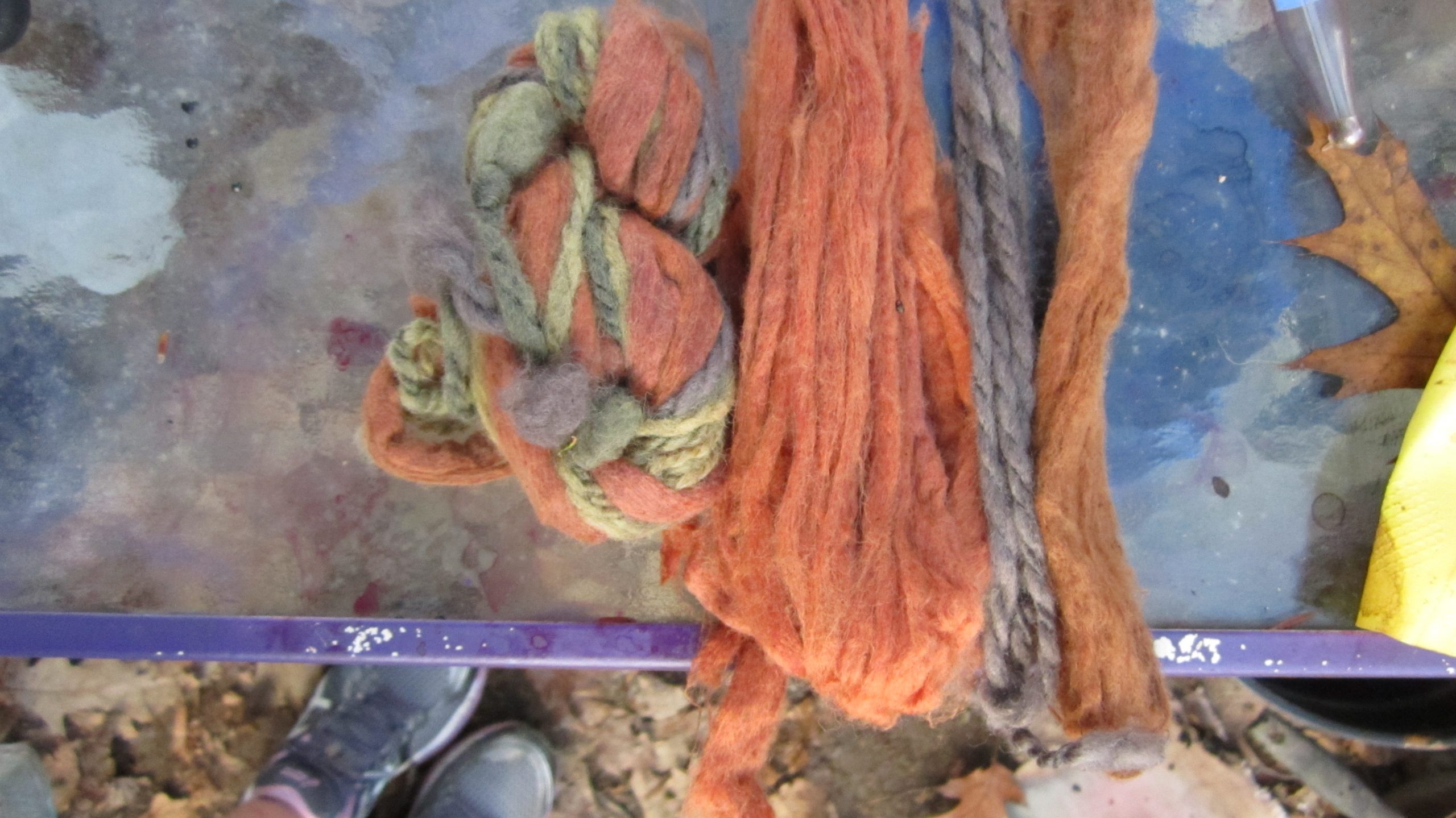
Plant Dyes Workshop Photos and Recipes!
Is there a greater way to celebrate the autumn than spending an afternoon in my backyard, along the Wallkill River cooking up natural dyes with a group of wonderful women? Definitely not! Luckily this is how I spent Saturday morning and afternoon. One participant in the workshop admonished that it was like a retreat– the fresh air, fall colors, and the sound of the river. I couldn’t agree more and am eager to spend more time dyeing and teaching workshops outside before the weather gets too cold.
The morning started off foggy and a little chilly, but before anyone arrived the sun burned off all that fog and left us with a gorgeous fall day, perfect temperatures, and sunshine. I wanted to give a range of the colors that we can achieve by harvesting dye plants in our own backyards and chose four plants with a lot of personality- Pokeberry, Stinging Nettle, Yellow Dock, and Staghorn Sumac.
Once all four dye pots got going we began dipping wool into one bath, then another, creating all sorts of fun combinations. We also learned about changing the color of your already dyed wool with an iron post-mordant. It is amazing to see the colors change right before your eyes! We ended up with a lovely range of colors– pinkish orange from the pokeberry, warm yellow from the dock, a light purple gray from the sumac, and yelllow green from the nettle. In combination with the iron-afterbaths we had quite a lot of variation.
Besides playing around with dipping wool samples and roving in all the different baths we also collaborated on a piece of artwork on some cotton/canvas material. I was thrilled when Diana had the idea– the suggestion reflected her interest in using natural dyes as more as paints than as dyes. Check out our collaborative effort! Dyes such as sumac and black walnuts are high in tannins, making them very good for pieces of cotton fabric like this. Pokeberry provided some good contrast with its reddish hues and the addition of dyed roving worked great as well– very fun! I will definitely incorporate this interactive element into future workshops.
I am thrilled to have met such inspiring and interesting artists and crafters and am looking forward to meeting and sharing knowledge with even more people as I begin to teach workshops, do demos, and develop myself as a natural dyer in the community! Stay tuned and meanwhile– try these recipes! We had great success and I’m sure you will as well!
Phytolacca americana
PRE-MORDANTING
2. Heat to 160-180 for 1- 1 ½ hours3. Remove fiber and put in your pokeberry vat immediately, or let sit in acidic water until dyeing.Use a large ratio of berries to fiber. Up to 20-25 parts berry to fiber is optimal for a deep red. A smaller ratio will produce more muted reds, pinks, and pink-oranges.DYEING1. Remove berries from stems, mash them, and add them to your dye pot.
2. Cover the berries with water and then add ½ cup vinegar for each gallon of water in the pot.
4. Let it steep for 1 hour then strain the berry mash out.
5. Add your pre-wetted yarn and soak it on medium heat for two hours.
6. If possible, let sit overnight.
7. When ready let your yarn hang in the shade for at least 20 minutes before rinsing.
Rumex species
5. Simmer for 1-1 ½ hours
6. Let cool then rinse gently and hang to dry in the shade
Urtica dioica
3. Simmer for about 30-45 minutes then strain the Nettles out.
4. Add your fibers to the dye bath and simmer for 1- 1 ½ hours
5. Let cool then rinse gently and hang to dry in the shade
Rhus typhina
2. Boil for 1- 1 ½ hours then strain the berries out.
3. Add your fiber, making sure that there is enough water and that it has cooled enough.
4. Simmer for 1- 1 ½ hours.
5. To achieve a dark grey add to a steaming iron bath for 30 minutes.
6. Let cool on a line before rinsing*You can also use an iron pot for your Sumac dye, creating dark greys and lavender immediately.

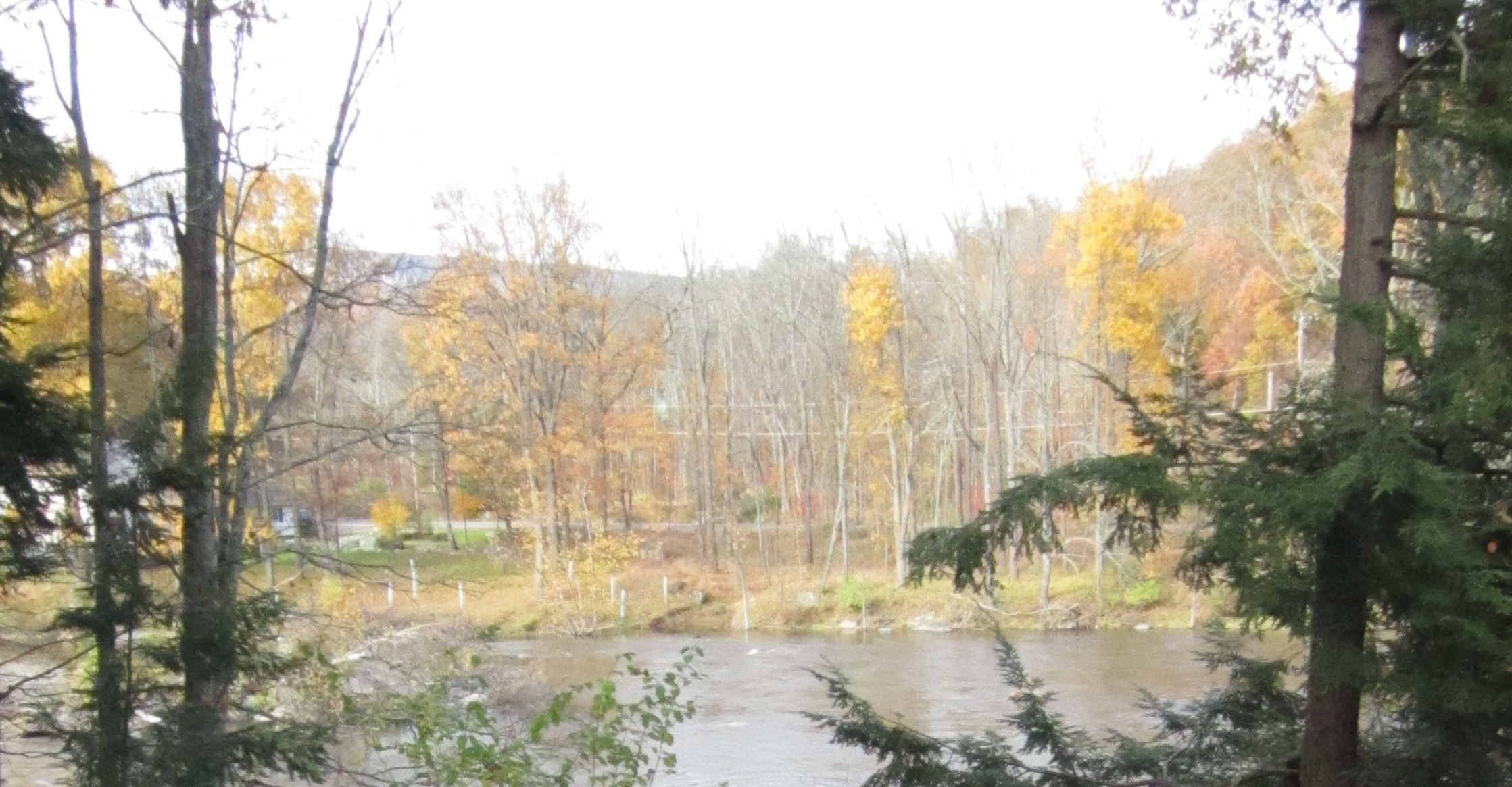

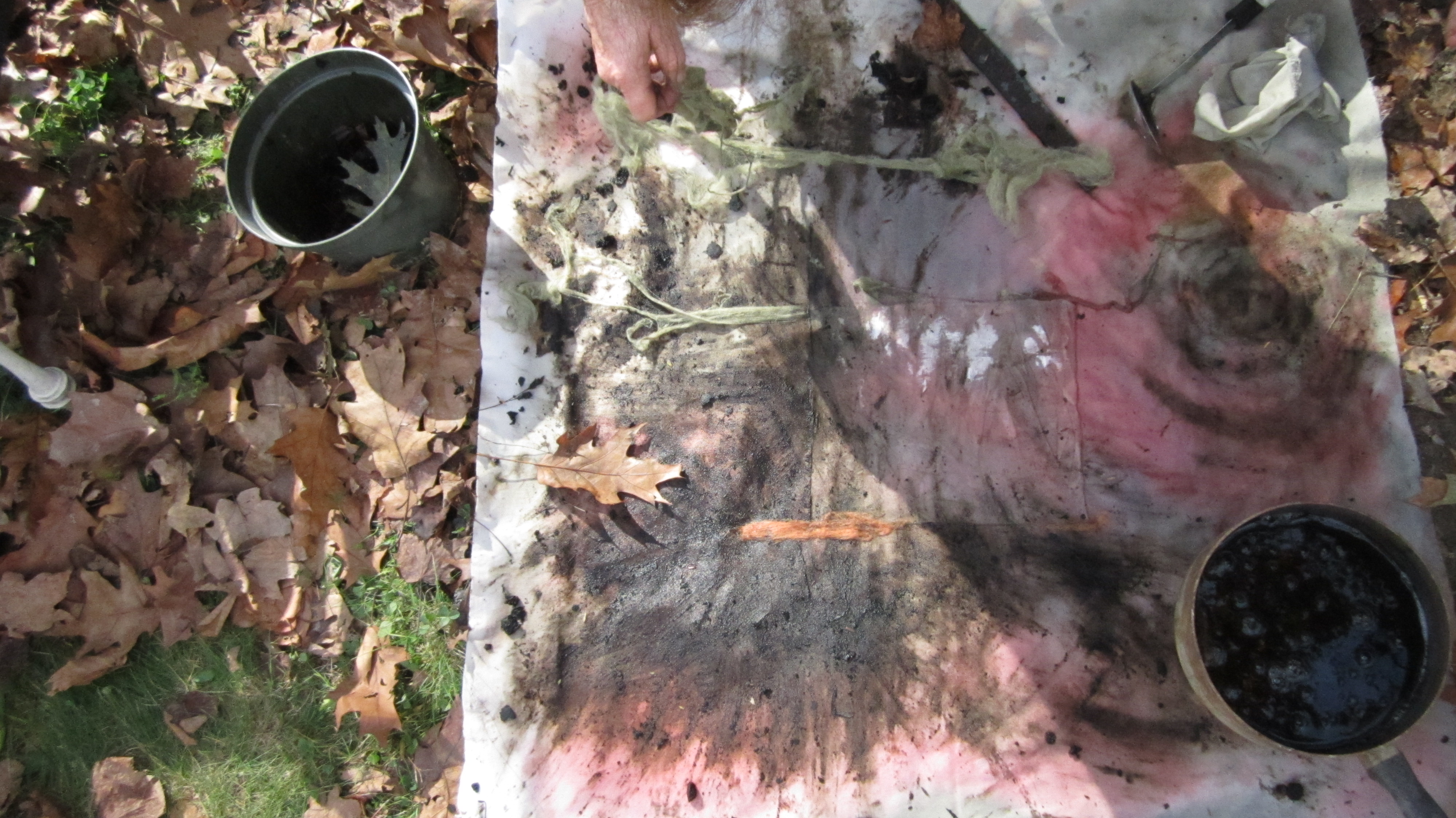
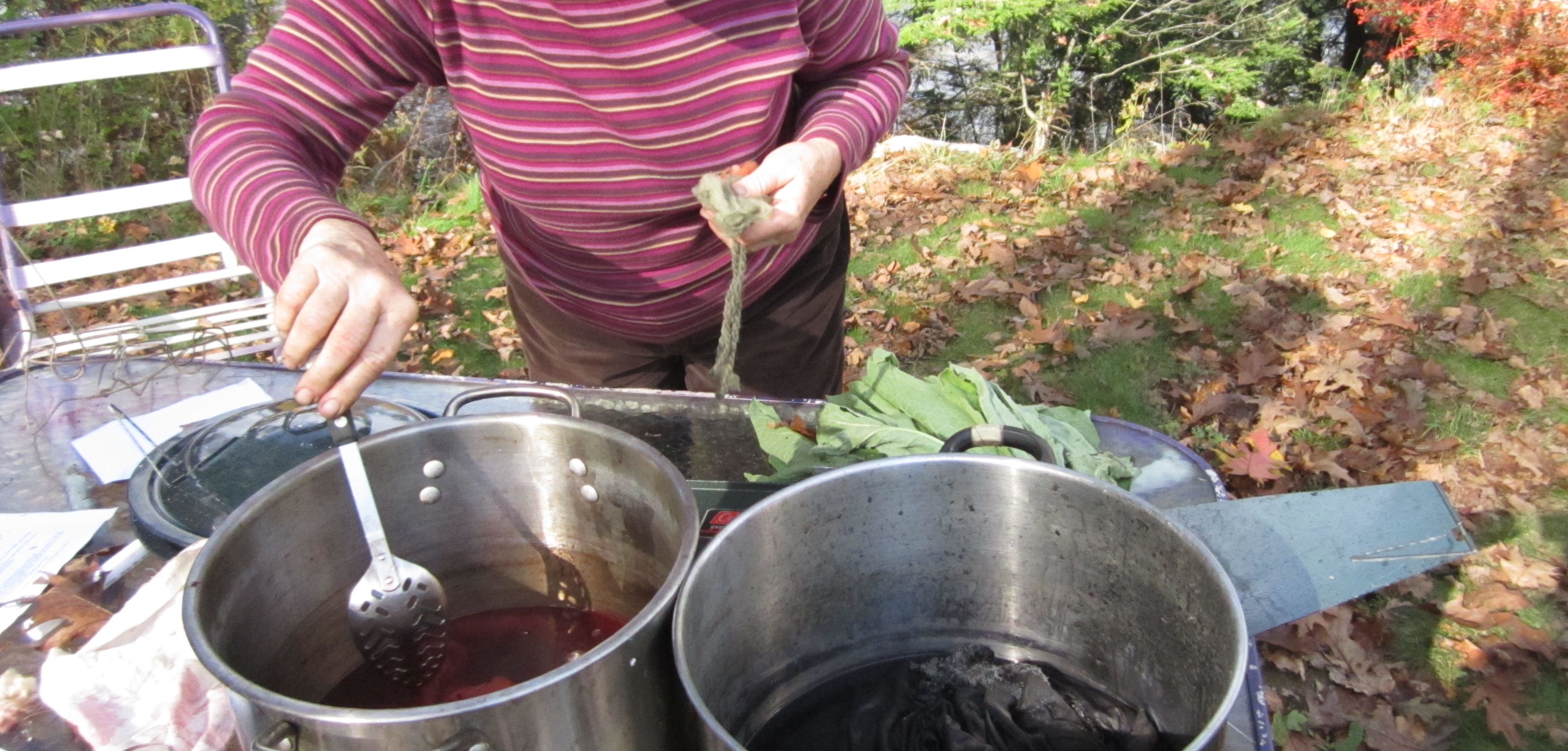


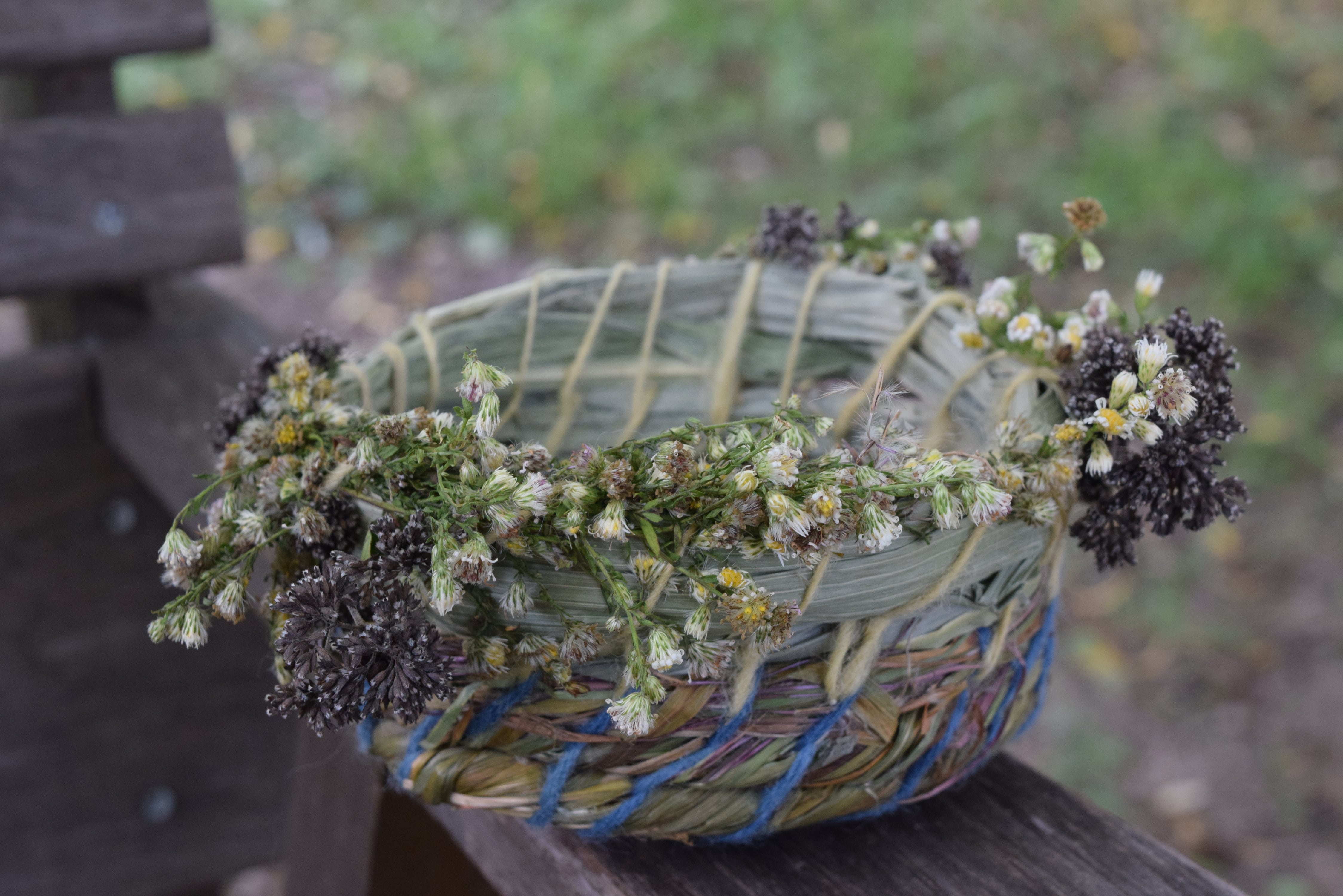
Great post—- pokeberries are my all time favorite. I can often get a stunning gray with the sumac then iron afterbath. I am so happy to see more and more people using natural dyes and interested in them. It is a bit more work, but well worth the effort.
Thanks for your comment! I will have to try an iron afterbath with the sumac– my grays were not quite as dark as I was looking for. You are definitely right that natural dyes are worth the effort– we have so many beautiful and vibrant dye colors all around us!
I am currently “fermenting” a dye bath in a hollowed out pumpkin…apparently the pumpkin will act as mordant and help keep your color…otherwise you can expect it to be a “fugitive” dye. I did pre mordant the fiber with white vinegar.